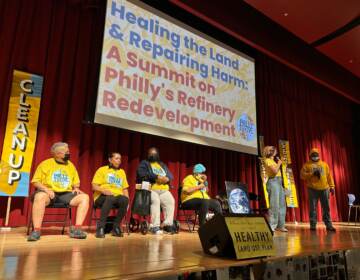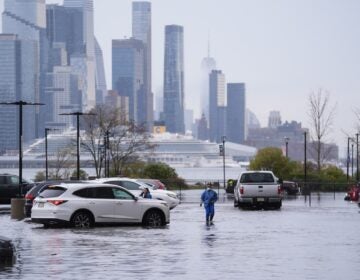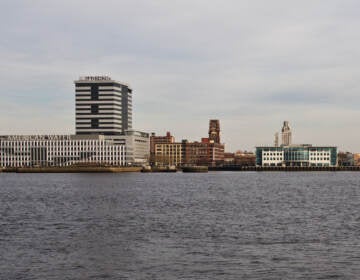Flooding at FDR Park lake renews criticism of renovation
Advocates worry the recent removal of tide gates at FDR Park hurt trees. Experts say it depends on the species and on how long they’re inundated.

Areas of FDR park still appeared flooded Monday evening. (Sophia Schmidt/WHYY)
This story is part of the WHYY News Climate Desk, bringing you news and solutions for our changing region.
From the Poconos to the Jersey Shore to the mouth of the Delaware Bay, what do you want to know about climate change? What would you like us to cover? Get in touch.
During the construction of a wetland in FDR Park in South Philadelphia, a contractor removed two tide gates. Last week, water levels in the park’s lakes rose, partially submerging the bases of some nearby trees, benches, picnic tables, and playground equipment.
The flood is the latest development to spark concern among residents who object to parts of the $250 million transformation of FDR Park, which will include a destination playground, a new welcome center, dozens of athletic fields and courts, a kayak and canoe launch, and a “great lawn” for celebrations and picnics.
“What we’re seeing here is at best incompetence, at worst negligence,” said Rich Garella, a South Philly resident and volunteer with Save The Meadows. “We have to see some kind of accounting for how it happened.”
Some tree species are well adapted to wet roots. But standing water can hurt others, if it remains for an extended period of time, said David Arscott, executive director and watershed scientist at Stroud Water Research Center.
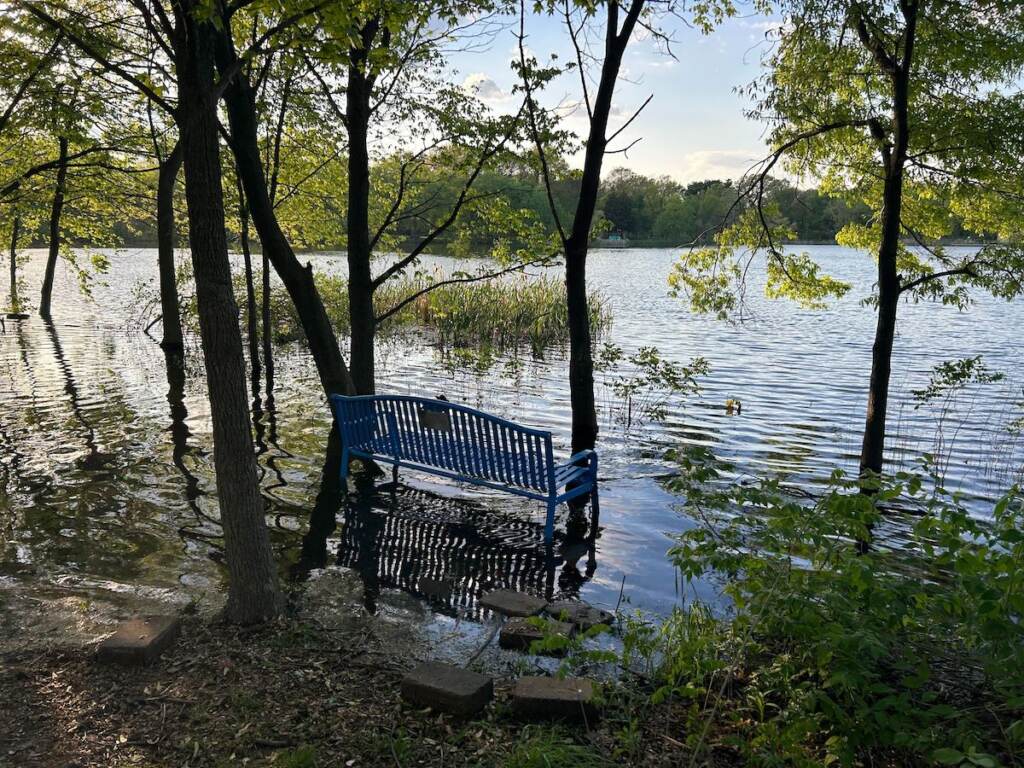
“Most trees and shrubs can withstand some time period of being inundated by floodwaters — typically something like maybe five days to a week,” Arscott said. “We’re going to have to wait and see.”
The 33-acre wetland project is an attempt to improve drainage at the park, where flooding from heavy rains often leaves existing amenities, including the baseball fields and playground, wet.
The project includes planting thousands of new native trees and shrubs, according to city officials, as well as dredging — so that area of the park can hold more water. Part of the dredged soil will raise athletic facilities to keep them dry.
The Philadelphia International Airport is funding and managing the wetland project as an offset for disrupting other wetlands in its cargo expansion project.
Save The Meadows calls the wetland project “greenwashing” because of its use as an offset and because it involved clearcutting dozens of acres of trees and vegetation. Some of the soil dredged to create the wetland will be moved to make a hill on a naturalized former golf course known as “the Meadows.”
The wetland project is supposed to include replacement of the tide gates that normally keep water from the Delaware River, through the Naval Reserve Basin, out during high tide, while allowing the park to drain during low tide. But “it was unanticipated that removal of the tide gates would create such a large increase in water levels,” airport spokesperson Heather Redfern said in an email Monday.
The airport’s contractors have reinstalled the old tide gates, until new ones can be built, and are pumping water back out, to “safely lower the water level and protect the surrounding trees and aquatic life,” Redfern said. She did not provide an estimate Tuesday for when the water levels would be back to normal.
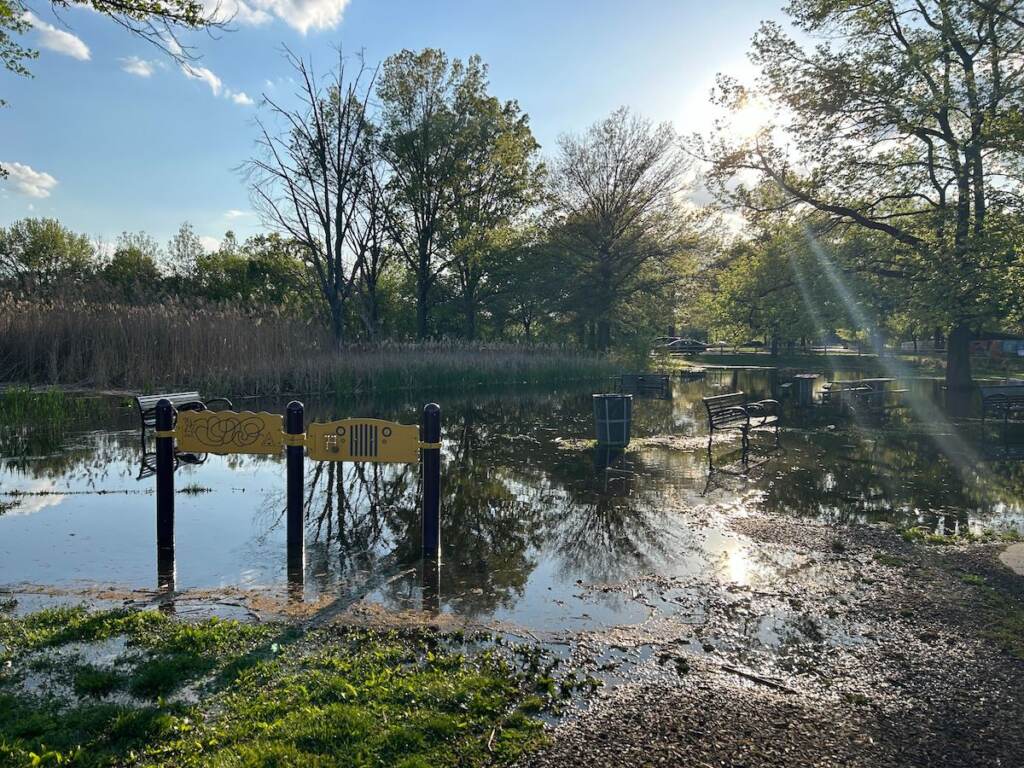
“We are continuing to employ all measures to return the park water levels to normal, but we are also watching the weather over the next week or so,” Redfern said in an email.
A Pennsylvania Fish and Boat Commission waterways conservation officer responded to the incident over the weekend to assess the “number of fish in distress” and relocate displaced fish back into deeper water, spokesperson Mike Parker said in an email Monday.
Because of the flooded conditions, “up to hundreds of fish” were “seen swimming into the shallow areas of the bank and grass that was flooded,” Parker said.
The Philadelphia Parks & Recreation and A.P. Construction, the airport’s contractor, deferred comment to the airport. A spokesperson for the Pennsylvania Department of Environmental Protection said the agency is not involved in responding to the incident, but was alerted about it on Friday.
Advocates with Save The Meadows are concerned about the impact the sudden influx of river water could have on wildlife, mature trees, and other plants. They say hundreds of trees were inundated.
“Normally the water in the park is coming from upstream,” Garella said. “It’s freshwater and it’s rainwater. It’s not salty water from the river. So that has the possibility of killing off a lot of life in the park — and we don’t know yet what the extent of that damage is going to be.”
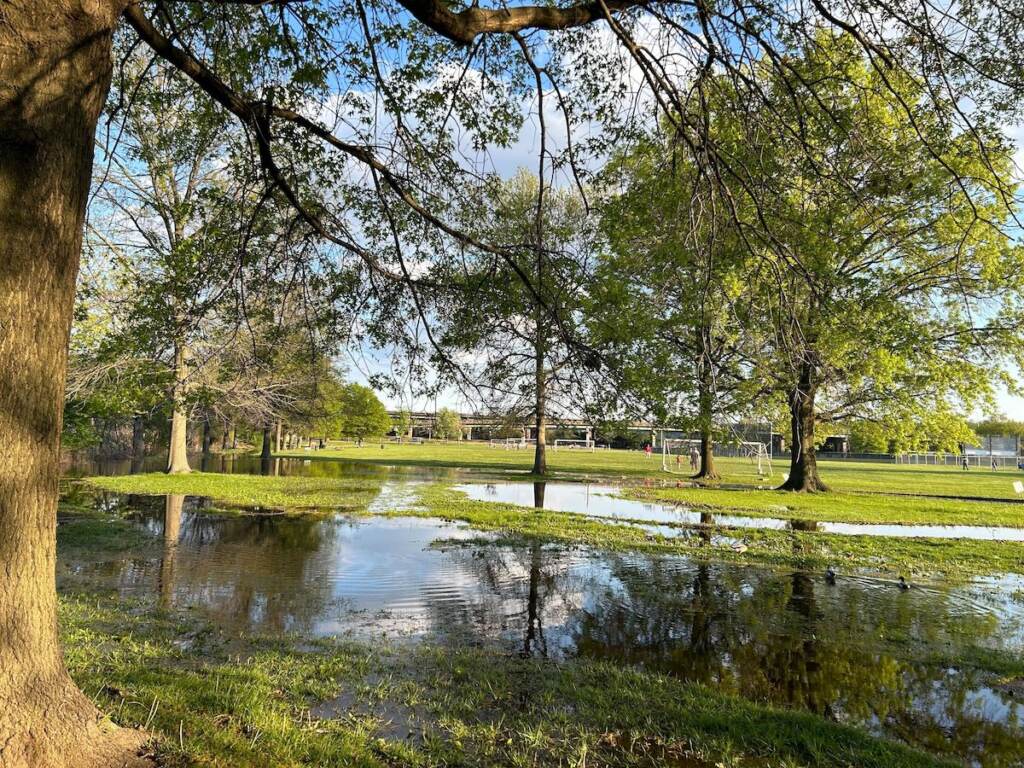
The salinity of the water that entered the park is likely not a concern for the fish in the lakes, said Parker, of the Fish and Boat Commission. It shouldn’t be a problem for the trees or plants either, said David Arscott, of the Stroud Water Research Center.
“It’s barely brackish,” Arscott said. “[Water from that part of the river is] totally in the range of what occurs in our freshwater systems.”
David Velinsky, senior scientist at the Patrick Center for Environmental Research at the Academy of Natural Sciences of Drexel University, agreed.
“It’s all freshwater,” Velinsky said.
It’s important to take seriously the concerns of park users and community members, said Steven Anderson, who studied salinity thresholds for wetland plants as a researcher with Duke University. But “natural communities tend to be a lot more resilient than we might think.”
The Pennsylvania Fish and Boat Commission will continue to monitor the impact of the flood on aquatic life, Parker said, and make a “full assessment once the water subsides.” The investigation could determine any liability for any resulting loss of aquatic life or recreational opportunities, Parker said.
Airport staff have also been on site since the flood began, to monitor the safety of aquatic life, Redfern said.

Subscribe to PlanPhilly
WHYY is your source for fact-based, in-depth journalism and information. As a nonprofit organization, we rely on financial support from readers like you. Please give today.




